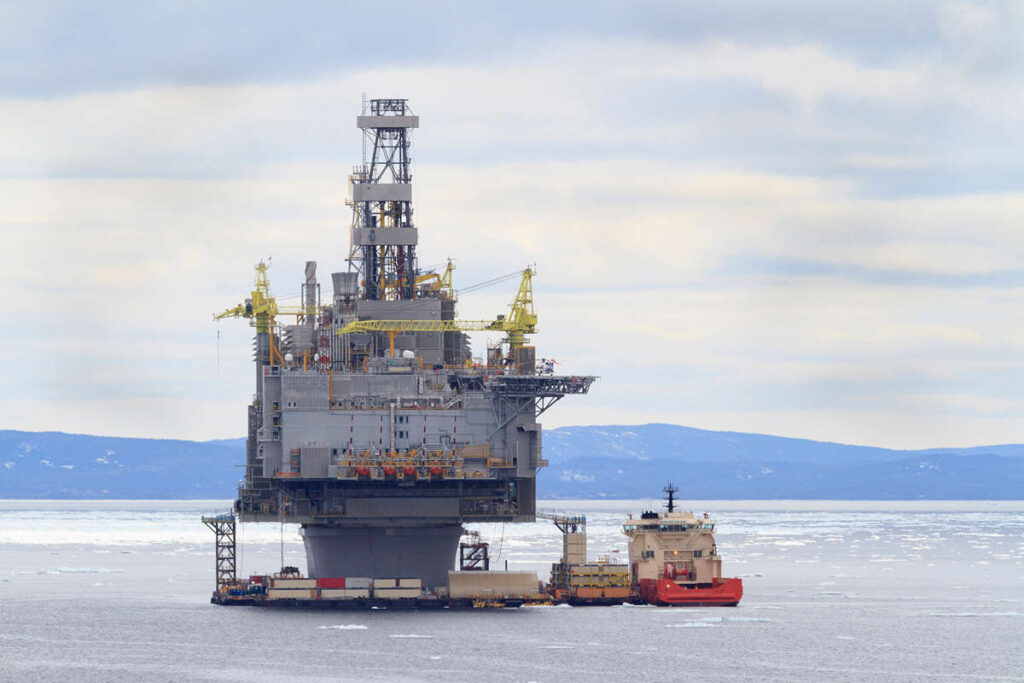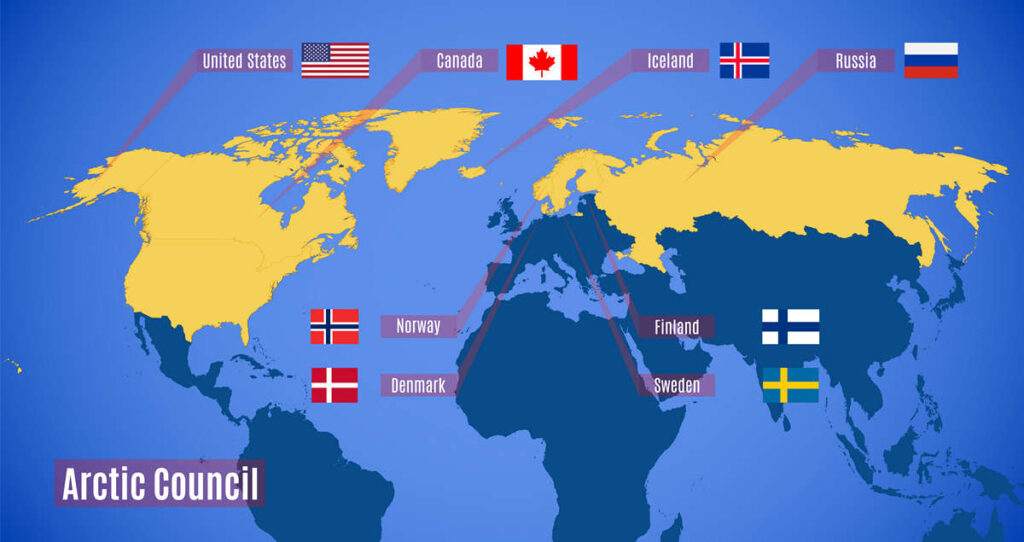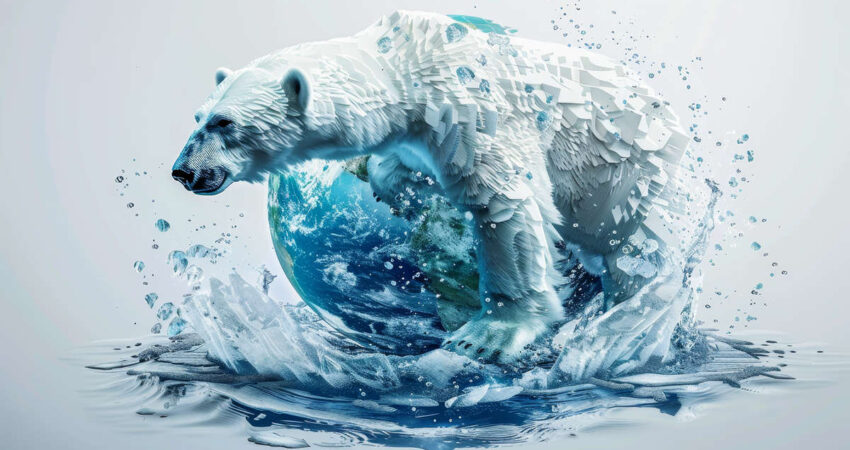Adobe: 782963438
On February 14th 2024, Russia announced https://www.reuters.com/world/russia-suspends-annual-payments-arctic-council-ria-agency-reports-2024-02-14/ that it was suspending its annual payments to the Arctic Council, the main international cooperation platform for the Arctic states, which includes eight member countries, six permanent participants representing indigenous peoples, and 38 observers.
The move confirmed the de facto isolation of the biggest Arctic state from the rest of the Council. The effective sidelining of Russia within the Council started a few weeks after its invasion of Ukraine in February 2022, when the rest of the Council – the USA, Canada, Denmark, Norway, Iceland, Sweden and Finland – suspended their participation. But nature abhors a vacuum, and the ramifications of Russia’s absence from international cooperation in the Arctic may prove far more worrying than the world expected.
No Pause Button for Nature
The decision not to engage with Russia was part of comprehensive economic and political sanctions introduced by western democracies after the February 2022 invasion. Russia – the Council’s chair at the time – was not officially excluded, but other states withdrew from the work of the Council until May 2023. After the pause, these states decided it was time to hand over chairmanship to Norway and continue the work of the Council without Russia. As a result, almost a third of the Council’s 130 projects are now frozen, according https://www.reuters.com/world/russia-suspends-annual-payments-arctic-council-ria-agency-reports-2024-02-14/ to Reuters.
Cooperation has not stopped altogether. In fact Moscow is even now keeping the door open, as its payments are suspended “for the time being, pending the resumption of pragmatic work with the participation of all member countries,” according to Russia’s Foreign Ministry.
For example, cooperation at a regional level, such as on search-and-rescue, has continued. However, most official channels have been paralyzed because, understandably, no institution wants to be perceived as collaborationist. This has for now halted scientific research, one of the key aspects of climate change mitigation efforts in the Arctic region. But unlike research institutions, nature cannot put its processes on hold, and the summers of both 2022 and 2023 have beaten heat records.
The Arctic – the New Klondike
Climate change has played a cruel joke on the Arctic region: meltdown of ice and thawing of the permafrost has made its abundant energy and other natural resources more accessible. Currently, it is estimated https://arctic.review/economy/oil-and-gas/ that some 10% of global oil supplies and 25% of natural gas supplies come from the Arctic region, mostly from onshore fields. The region also holds around 22% of the world’s undiscovered oil and gas reserves.
Furthermore, the Arctic is rich https://www.researchgate.net/figure/Share-of-Arctic-Zone-in-world-reserves-and-mining-of-main-metals_tbl1_287972704 in rare earth metals critical to the modern economy, particularly for the production of electronic devices. Up to 40% of world’s palladium production originates in the Arctic, along with 15% of platinum and 14% of nickel.
Ice degradation also allows faster transportation. This is the case with widely discussed projects such as China’s Polar Silk Road and Russia’s Northern Sea Route, which bypass Eurasia from the north, or the Northwest Passage, connecting the Bering Strait to the Atlantic and bypassing America from the north – but it doesn’t stop there: accessible Arctic waters will allow fibre links to be extended at high altitudes, significantly shortening their length and thus allowing for faster internet connections, which will make a difference to international trade and financial markets.
The Void
Unsurprisingly, more and more major global powers are declaring the region an area of national interest. At the same time, any exploitation of the Arctic increases irreversible ecological change; the region is already heating up three times faster than the rest of the world, making cooperation and coordination of any economic activities in the region quite literally vital for human civilization. But with Russia’s withdrawal from the cooperation process, the more or less established equilibrium in the Arctic is threatened. More than 50% of the Arctic’s land mass and 45% of its total area belongs to Russia. Thus, although Russia is formally on equal terms with the other seven members of the Arctic Council, its actual influence on the region is much greater.
Ironically, Russian economic activities in the Arctic have taken off with a vengeance. Regional LNG producers are experiencing an unprecedented boom, due to record gas prices in Europe in 2022 and 2023 and the EU’s decision to cease using the Russian pipeline network. According to Russian experts https://www.e3s-conferences.org/articles/e3sconf/pdf/2023/15/e3sconf_iirpcmia2023_06007.pdf , the Russian region of the Arctic contains about 70% of the world’s Arctic gas reserves. For now, most of the oil and gas fields that have been discovered – some 350 in total – are located onshore, while there are only around 30 offshore fields.

Adobe: 144719140
Estimates, however, suggest that total reserves are mainly located away from land. This is where things get complicated: Russia, now effectively cut off from cutting-edge extraction technology due to western sanctions, is struggling to acquire these hidden treasures. Due to US sanctions, even the involvement of China and other non-western players in the most prominent offshore gas projects such as Arctic LNG 2, Yamal LNG and Sakhalin 2 does not provide Russia with the necessary technology. Russia will not give up, however, and will undoubtedly either seek cooperation with other players or resort to outdated technology to obtain various Arctic resources. And since the traditional Arctic players are now unavailable, Russia is likely to usher new players into the region.
China and India – the New Arctic Nations?
As indicated above, many important players have demonstrated their interest in the Arctic. The two most prominent countries that Russia can turn to are China and India. Both states now have Arctic strategies, and both pursue their interests on a realpolitik basis, not shying away from protecting their economic investments with military force.
China adopted its Arctic Strategy https://english.www.gov.cn/archive/white_paper/2018/01/26/content_281476026660336.htm in 2018, proclaiming itself a “near-Arctic state”. The strategy puts an emphasis on the importance of Arctic research and environmental protection. China currently operates two permanent research stations in the polar north: the Yellow River Station in Svalbard, Norway, and the China Iceland Arctic Research Observatory (CIAO), located in the northern part of Iceland. Both sites are focused on advancing scientific knowledge, such as atmospheric, space, and marine observations.
The document also makes a point of internationalizing the region.

Adobe: 345645171
While recognizing the role of the eight Arctic nations, the Chinese strategy expresses the country’s own intention to play a more important part in accessing the region’s natural resources and promoting security.
Five years later, China was on schedule with its strategy. In April 2023 a groundbreaking memorandum on extensive cooperation in Artic waters was signed https://thebarentsobserver.com/en/security/2023/04/russias-arctic-coast-guard-cooperation-china-big-step-expert by the Chinese Coast Guard and Russia’s FSB Coast Guard. As a follow-up, a Chinese delegation was invited to observe the long-planned Arctic Patrol 2023 maritime security exercise. Economic cooperation was also discussed, namely a roadmap for increased business, shipbuilding, and Polar Silk Road developments.
This Chinese–Russian cooperation, however, is not an easy one. The two nations have a history of prolonged negotiations as well as rivalry in some regions. As Dr Elizabeth Buchanan from the Australian National University puts it in her 2023 book Red Arctic: Russian Strategy Under Putin https://www.google.at/books/edition/Red_Arctic/OAr2DwAAQBAJ?hl=ru&gbpv=0 , the Chinese presence in the Russian Arctic zone increases security risks – which in turn increases environmental risks.
In its turn, India adopted its Arctic Strategy https://moes.gov.in/sites/default/files/2022-03/compressed-SINGLE-PAGE-ENGLISH.pdf in 2022. The country’s interests are similar to those of China, including research, environmental protection, transportation capabilities, and increasing India’s influence, as well as human development and promoting security. India also has two permanent scientific bases in the Arctic. One of them is the Himadri research station, located in Norway, and the other is the IndARC underwater observatory station, focused specifically on climate change observations and analysing the Arctic influence on the monsoon.
The country is also interested in cooperation with Russia, including on security issues, causing intensive discussion in the USA https://www.highnorthnews.com/en/polar-tiger-why-india-must-be-included-new-us-arctic-defense-strategy regarding whether India should be included in America’s new Arctic Defense Strategy.
As well as China and India, Saudi Arabia and even Pakistan have expressed interest in the Arctic, but without producing strategic documents on the topic as yet. Japan and South Korea have also expressed interest in the region and even adopted corresponding strategies.
As a bottom line, Russia has options beyond the Arctic Council states to turn to if its leaders feel cornered. The ramifications of true internationalization of the Arctic are bound to result in economic activity, which is ominous for environmental protection and therefore for global climate change. In contrast to its stance on other international forums such as the OECD and G7, Russia is not for now in a hurry to withdraw from the Council completely. But the ice is getting thinner day by day.

